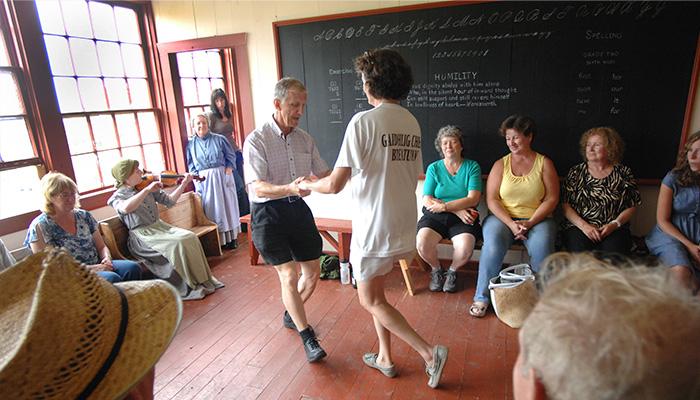A look back
Gaelic in Nova Scotia has roots that reach back to the 1700s. During a time of great economic and social upheaval, many Gaels from the Islands and Highlands of Scotland looked to Nova Scotia for the opportunity to begin a new life.
From the mid 1700s to early 1800s, tens of thousands of Gaels arrived in Nova Scotia, settling primarily in the eastern mainland of the province and in Cape Breton. Like many early settlers starting out in a new land, they didn’t have much in the way of wealth or possessions. What they did have was a true sense of community, deep family connections and shared traditions rooted in their Gaelic language and culture.
Groups of families settled and worked together, establishing strong communities in Nova Scotia. Many were named after towns and villages left behind in Scotland such as Arisaig, Eigg Mountain, Bornish and Keppoch.
Gaelic language and culture flourished in Nova Scotia. A language rich in oral tradition and storytelling, Gaelic was passed on from generation to generation through the institution of the visiting house or “taigh céilidh”. Families would gather to share stories, songs and music. The Gaelic language became deeply ingrained. In the early 1900s, as many as 50,000 Nova Scotians spoke Gaelic as their mother tongue.
Gaelic language and culture remain distinct parts of Nova Scotia’s identity today. Many Nova Scotians are descendants of Gaelic settlers. The connection to Nova Scotia’s Gaelic heritage continues on. It is shared in traditions, heard in music, and experienced in communities.
Highland Village Museum – Learn more about the Gaelic language and Gaelic cultural expression in music, song, dance and the Céilidh tradition.
Gaelic Nova Scotians today
Population and Language
- Estimates from the community indicate that there are approximately 2000 speakers of Gaelic in Nova Scotia today.
- Gaelic continues to be a strong part of the cultural fabric of the province. There are approximately 230,000 people who are descendants of Gaelic settlers.
- Many are involved in cultural activities such as music, song and dance that stem from the Gaelic language.
Economic Impact
- Gaelic and Gaelic-related events, business and activities contribute $23 million annually to the provincial economy.
- Festivals and events such as Celtic Colours, Féis an Eilein and the Antigonish Highland Games include Gaelic language and culture in their programming and events.
- Gaelic-related institutions offer Gaelic language and cultural programs.
Education and Development
Today, a new generation is taking an interest in Gaelic and recognizing the social and economic benefits of maintaining Nova Scotia’s diversity through reclaiming Gaelic language and culture.
- There are 24 Gaelic-related societies, organizations and institutions in Nova Scotia.
- English-Gaelic boundary signs are found in the eastern districts of the province, reflecting the place names that Gaels had for many communities.
- Gaelic language and studies are offered in 15 public schools in the province with approximately 1200 students enrolled.
- There are 12 communities across the province where adult immersion learning programs are active and ongoing.
- Since 1997, May has been designated as Gaelic Cultural Awareness month in Nova Scotia. It provides an annual opportunity for Nova Scotians to reconnect with Gaelic language and culture through activities such as workshops, language immersion and events and celebrations in communities throughout the province.
- Since 2008, 16 apprentices have worked with 11 mentors on language and cultural skills, as part of the Bun is Bàrr mentorship program. These apprentices are now teaching Gaelic to new learners of the language and youth.

